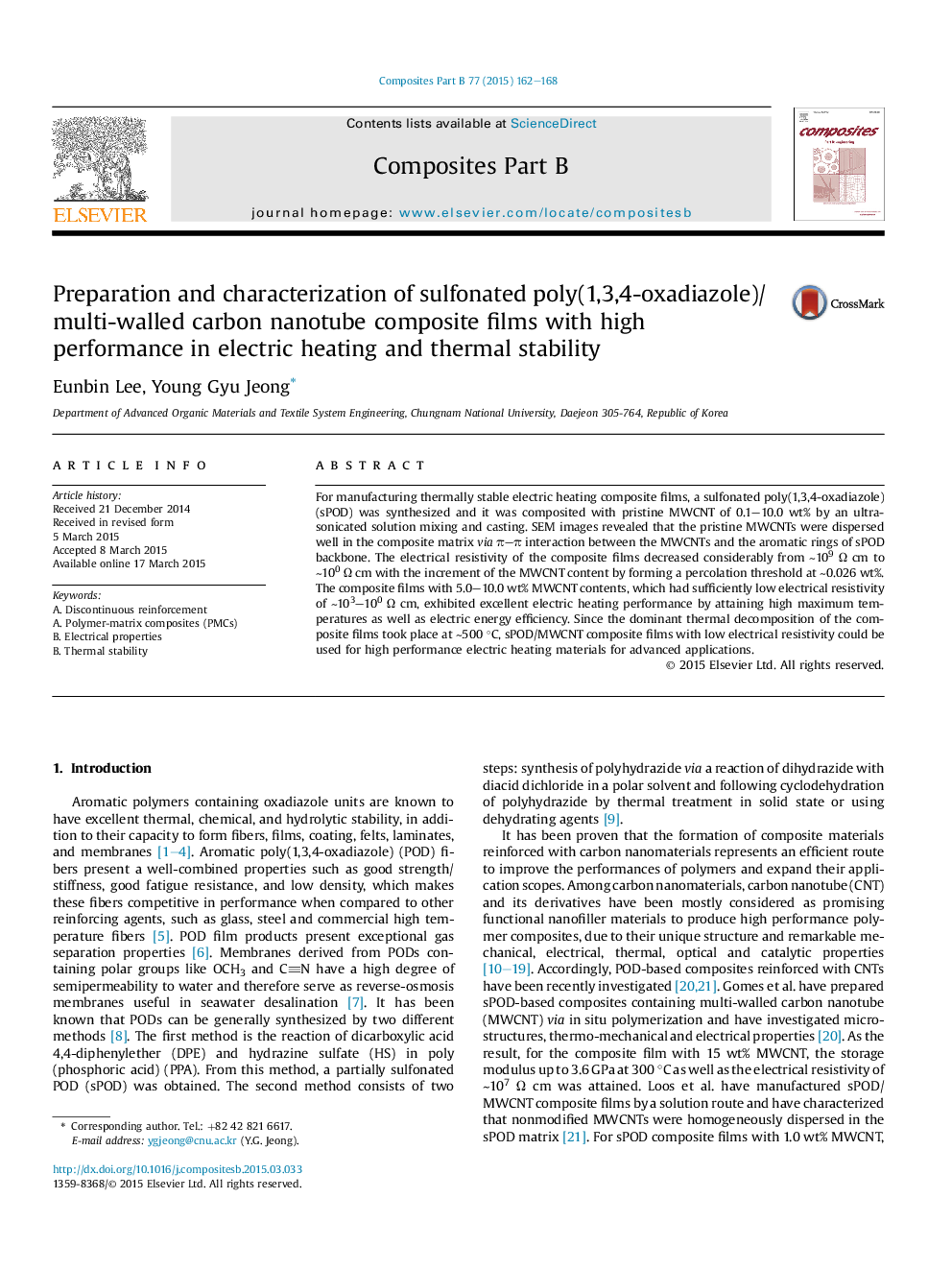| Article ID | Journal | Published Year | Pages | File Type |
|---|---|---|---|---|
| 7213093 | Composites Part B: Engineering | 2015 | 7 Pages |
Abstract
For manufacturing thermally stable electric heating composite films, a sulfonated poly(1,3,4-oxadiazole) (sPOD) was synthesized and it was composited with pristine MWCNT of 0.1-10.0 wt% by an ultrasonicated solution mixing and casting. SEM images revealed that the pristine MWCNTs were dispersed well in the composite matrix via Ï-Ï interaction between the MWCNTs and the aromatic rings of sPOD backbone. The electrical resistivity of the composite films decreased considerably from â¼109 Ω cm to â¼100 Ω cm with the increment of the MWCNT content by forming a percolation threshold at â¼0.026 wt%. The composite films with 5.0-10.0 wt% MWCNT contents, which had sufficiently low electrical resistivity of â¼103-100 Ω cm, exhibited excellent electric heating performance by attaining high maximum temperatures as well as electric energy efficiency. Since the dominant thermal decomposition of the composite films took place at â¼500 °C, sPOD/MWCNT composite films with low electrical resistivity could be used for high performance electric heating materials for advanced applications.
Keywords
Related Topics
Physical Sciences and Engineering
Engineering
Engineering (General)
Authors
Eunbin Lee, Young Gyu Jeong,
